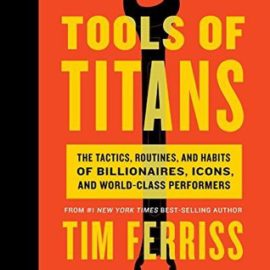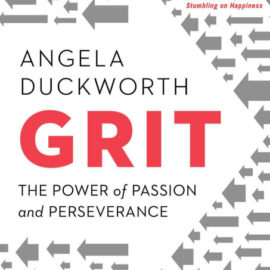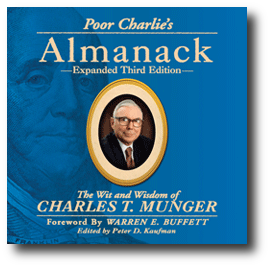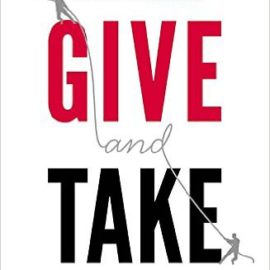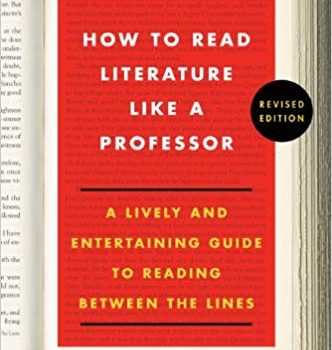

Do you want to learn to get more out of the novels you read? Are you interested in learning how authors communicate through literary devices like symbols, archetypes, and allusions?
How to Read Literature Like a Professor by Thomas C. Foster is a crash course in the art of reading intelligently. In this book, you’ll learn how to identify common literary conventions and gain the skills necessary to analyze them like a professor would.
In this book, you’ll discover why Goose had to die in Top Gun and why sex scenes aren’t always about sex in literature.
1-Page Summary of How to Read Literature Like a Professor
What is the difference between reading like a student and reading like a professor?
Students:
- Focus mostly on the plot and characters in a story.
- Respond to the story first on an emotional level.
Professors:
- Focus mostly on memory, symbol, and pattern in the story.
- Accept the emotional response, but look deeper to find the universal truth displayed.
The combination of using memory, identifying symbols, and recognizing patterns allows a reader to analyze literature in a new light—the way a professor would. If you ignore memory, symbols, and patterns in literature, you will not be able to appreciate a book for everything that it says between the lines.
This book teaches you:
- The conventions of literature: Character types, plot structures, themes, symbols, archetypes, and more.
- The skills to find and analyze them on your own.
Memory
When you read with a powerful memory, you actively look for how the text corresponds to other literary works. You mentally flip through the things you’ve read before and look for similarities (or differences) to the structure, theme, or characters of what you’re reading now.
For example, as you watch the movie Pale Rider starring Clint Eastwood, you might be reminded of the movie Shane from 1953.
These similarities are what critics call intertextuality. Authors use references and parallels to draw connections to previous literary works.
Intertextuality in literature deepens the meaning of the text by drawing on the reader’s expectations.
Example of Memory: Going After Cacciato
A great example of intertextuality, an author referencing previous literature, occurs in Tim O’Brien’s novel Going After Cacciato. The novel has three interwoven stories: one, the history of protagonist Paul Berlin’s war experiences; two, an imagined trip to Paris in search of their fellow soldier Cacciato; three, the present night in which Paul Berlin is remembering the first story and inventing the second.
In one part of Berlin’s fantasy trip, he and his squad fall down a hole in the road. They end up in an otherworldly network of tunnels. One character even states that they need to fall back up. As a reader, you are invited to relate this part of the story to when Alice falls down the rabbit hole in Lewis Carroll’s Alice in Wonderland.
Now that you have made that connection, your reading of the story will be nuanced by that awareness. You might expect that the tunnels the characters find themselves in will be some kind of wonderland for them.
Memory: Sacred Texts
In order to truly read literature like a professor, you need to be on the lookout for intertextual references to “sacred texts,” like Shakespeare, classic fairy tales, ancient myths, and the Bible.
Using recognizable themes or plots from these sacred texts gives the author the chance to use the reader’s associations to say more in their own work with fewer words. And for the reader, recognition of these references enhances the experience of reading current literature, because the modern stories share in the power of the sacred text.
How authors utilize the common sacred texts:
Shakespeare
Shakespeare’s work provides a source against which writers can challenge ideas and struggle through timeless questions.
Like this summary? Want to learn more from books than ever? You'll love my product Shortform.
Shortform has the world’s best guides to 1000+ nonfiction books and articles. Even better, it helps you remember what you read, so you can make your life better. What's special about Shortform:
- The world's highest quality book guides - we discuss the book's main ideas, with expert analysis and commentary expanding will beyond the book
- Interactive exercises that teach you to apply what you've learned
- Discussion communities - get the best advice from other readers
Sound like what you've been looking for? Sign up for a 5-day free trial here.
For example, Athol Fugard’s play “Master Harold” … and the Boys uses Shakespeare’s Henry IV, Part II as a device. Fugard mimics Shakespeare’s plot—in this version, Harry must turn away his black friends in an effort to grow up and become responsible. Fugard invites his audience to question whether choosing to regress toward racism is really the mark of growing up. He challenges Shakespeare’s values, and gives the audience the chance to do the same.
Fairy Tales
Fairy tales are popular choices for authors to reference because they’re an assumed body of knowledge. Most readers can relate to and recognize the classic fairy tales.
For example, an author could adapt the plot of “Hansel and Gretel” in their work. The story of children far away from home, lost in a forest, and captured by some evil witch in a strange place—you’ve probably seen a version of this in something you’ve read.
Myth
References to mythology in literature show that the story goes beyond what is on the page—it is really a story about humanity’s noble yet primal motivations.
For example, Derek Walcott’s Omeros uses parallels to The Iliad and The Odyssey to tell the story of a community of Caribbean fishermen. He knows this community intimately and wants to tell their story in a way that highlights their struggles, as well as their triumphs. The narrative guide of the classic myths allows Walcott to show the nuances of the fishermen’s condition by associating their story with an ancient epic.
The Bible
Many authors use the Bible to highlight the differences between religious tradition and modern life, or to enhance the reader’s awareness that the story speaks to the tensions and struggles that have existed since the beginning of man.
For example, Ernest Hemingway used the title The Sun Also Rises, which alludes to a passage from the Bible that is about hope and life’s endless cycle. But Hemingways’ book is about hopelessness—it’s about infertility and the feeling that the future will never come. Hemingway’s ironic biblical reference is meant to highlight a key theme for the reader.
Symbol
When you read with a symbolic mind, you constantly look for metaphors and analogies. You not only see things for what they actually are, but also what they might represent.
Common symbols and their associations:
- Vampires, ghosts, and monsters represent the darker side of reality.
- Flight represents freedom.
- Weather illustrates a novel’s atmosphere and themes.
- Rain represents cleansing, regeneration, or misery.
- Fog represents confusion.
- Snow represents inhospitality or coziness, depending on the story.
- Seasons are symbols for a character’s age, his place in the cycle of life, or his emotional state.
- Winter is the season of anger, unhappiness, old age, and death.
- Spring is the season of naivety, possibility, birth, and childhood.
- Summer is the season of love, passion, and adulthood.
- Fall is the season of tiredness, reflection, personal harvest, and middle age.
Some symbols in literature are less commonly used, even unique to a particular novel or author. While it is more challenging to interpret the meaning of a symbol you’ve never seen before, you can still draw on your experiences with previous works of literature as a guide.
And symbols aren’t always objects. Some actions that are commonly used as symbols are:
- Violence: Acts of violence in literature are always a symbol for some greater kind of personal or societal suffering.
- Sex: Authors include sex scenes in a novel when they are trying to illuminate other themes, such as submission, rebellion, or fertility.
When interpreting symbols in literature, think of it as an imaginative and intellectual exercise. In order to read like a professor, you have to be able to look beyond the symbol and draw conclusions about how the themes of the novel could be represented there.
Example of Symbol: Passage to India
In E. M. Forster’s A Passage to India, a progressive woman named Adela is taken on an outing to the Marabar Caves by an Indian man named Dr. Aziz. In the cave, Adela has a confusing experience. She runs out of the caves bruised and scared, feeling as though she’s been assaulted. She later discounts her own story, unable to be sure of what transpired in those caves.
The mysterious caves in the story are clearly symbols—but that’s the only thing that’s clear about them. Readers can infer a variety of meanings from the caves. Here are just a few:
- Considering caves as the dwellings of our earliest ancestors, you might read the caves as a symbol of the most primitive elements of human nature. Maybe Adela was scared when confronted with the most basic element of her own nature.
- Perhaps Forster was implying that every person’s cave is different. Throughout the beginning of the novel, the caves are only described very vaguely, as though they must be seen to be understood. The reader could interpret the caves as standing for our own, individual fears.
- Adela’s cave could symbolize her fear of matrimony and sex. She is on the cusp of an arranged marriage and comes out of the cave feeling as though she has been assaulted. Perhaps this is a symbol of her feeling the marriage is being thrust on her.
- The caves could be a racial or cultural symbol in some way.
A Passage to India is a great work of literature because of its networks of possible meanings and significance. The fact that every reader can bring his own experience to the book and come away with a different interpretation of the caves speaks to the power of its symbols.
Pattern
When you read to observe patterns, you recognize the similarities between life and books. You look beyond the plot to see how the drama and characters illustrate a truth of human experience.
One of the main benefits of the similarities and connections between literary works is the emergence of archetypes. “Archetype” really just means “pattern,” or the original on which that pattern was based.
Common archetypes and their associations:
- The Quest
- Any time a character goes on a trip and learns about herself along the way, that is a quest narrative.
- Meals
- Any time characters come together to share a meal, that is an act of communion.
- Sacrifice of Secondary Characters
- Many secondary characters or sidekicks die in the course of a story. This is a common pattern employed by authors to create the need for revenge.
- Political and Social Criticism
- Any story that includes a consideration of the class relations, power structures, sex and race relations, or ethical dilemmas of its time is a political criticism.
- Baptism
- Any time a character emerges from water in which they nearly drowned, it is a symbolic baptism. That character has been reborn with a new identity.
- Injuries and Disabilities
- Scars: Physical deformities are given to characters to mark them as different.
- Blindness: If you see a blind character in a story, know that the author is alerting you to the theme of sight and blindness—insight and ignorance.
- Disease: Authors give characters illnesses that symbolically highlight their own moral or emotional shortcomings.
Example of Pattern: The Crying of Lot 49
The Crying of Lot 49 by Thomas Pynchon follows the pattern of a quest narrative. In the novel, a young woman named Oedipa travels from San Francisco to Southern California to execute the will of her former lover. Along the way, Oedipa meets a lot of strange and scary characters and ends up in a lot of dangerous situations. By the end, Oedipa has learned to rely on herself and trust her own self-knowledge.
In this novel, Thomas Pynchon presents an example of a classic quest narrative because there is a young quester, a place to go, a stated reason to go there, and an alternative mission fulfilled: the quest for self-knowledge
Like this summary? Want to learn more from books than ever? You'll love my product Shortform.
Shortform has the world’s best guides to 1000+ nonfiction books and articles. Even better, it helps you remember what you read, so you can make your life better. What's special about Shortform:
- The world's highest quality book guides - we discuss the book's main ideas, with expert analysis and commentary expanding will beyond the book
- Interactive exercises that teach you to apply what you've learned
- Discussion communities - get the best advice from other readers
Sound like what you've been looking for? Sign up for a 5-day free trial here.
.
Advice for Readers
Now that you have a sense of how to use memory, interpret symbols, and recognize archetypes in literature, you are almost ready to start reading like a professor.
Some other advice for the intelligent reader:
- Irony changes everything.
- When an author turns your expectations of common literary devices upside down, that is called irony. In that case, forget everything you’ve learned in this book. Irony makes it all irrelevant.
- Don’t worry about the author’s intentions.
- Unless the author has spoken or written about their work, there is no way to know whether they purposely injected allusions, symbols, and archetypes into the story. Use your instincts and trust what you discover in the text.
- There’s no such thing as being right.
- When discussing literature with others or simply analyzing it for yourself, you will never be able to definitively prove your theories. All you can do is look for evidence in the text.
Full Summary of How to Read Literature Like a Professor
What It Means to Read Literature Like a Professor
A literature professor is always looking for meaning and significance beyond the text of a novel, poem, or play. Here’s an example:
In the play A Raisin in the Sun by Lorraine Hansberry, the protagonist, Walter Lee Younger, moves his African American family into an all-white community. A white man named Mr. Linder comes to Walter with an offer: He wants to buy the Younger family out of their claim on the house. Although the offer is insulting, Walter Lee is forced to consider it. This is one of the play’s primary dramas.
Imagine you’ve just read the play. Would you be surprised to hear your literature professor say that Mr. Lindner is the devil? Would you have come to that conclusion on your own?
If not, that’s okay. That means that you, the student, and your professor have read the same story, but not in the same way. Your professor has had practice analyzing literature and finding its conventions and codes. She has the skills to remember instances of bargaining with the devil in other stories, and connect that pattern to Mr. Lindner through common plot devices and themes.
Read the rest of the “How to Read Literature Like a Professor” summary at my new book summary product, Shortform.
Here’s what you’ll find in the full How to Read Literature Like a Professor summary:
- What It Means to Read Literature Like a Professor
- Memory: Compare Texts
- Exercise: Draw on Your Literary Memory
- Symbols, Part I: Recognize and Interpret Metaphor
- Symbols, Part II: The Symbolic Significance of Setting
- Exercise: Recognize and Interpret Symbols
- Symbols, Part III: Actions as Symbols
- Pattern, Part I: Know the Archetypes, Find Them Everywhere
- Exercise: Identify the Quest Archetype
- Pattern, Part II: The Injured Character Archetype
- Advice for Readers
- Your Turn to Read Like a Professor
I’ve been building Shortform for the past year. It’s the book summary product I always wanted for myself. I was never satisfied with the summaries from what was on the market, and so I built Shortform for myself and readers like you. If you like my book summaries, you’ll love Shortform.
Shortform has the world’s best summaries of nonfiction books and articles. Even better, it helps you remember what you read, so you can make your life better. What’s special about Shortform:
- The world’s highest quality book summaries – comprehensive, concise, and everything you need to know
- Interactive exercises that teach you to apply what you’ve learned
- Discussion communities – get the best advice from other readers
Sound like what you’ve been looking for? Sign up for a 5-day free trial here.



